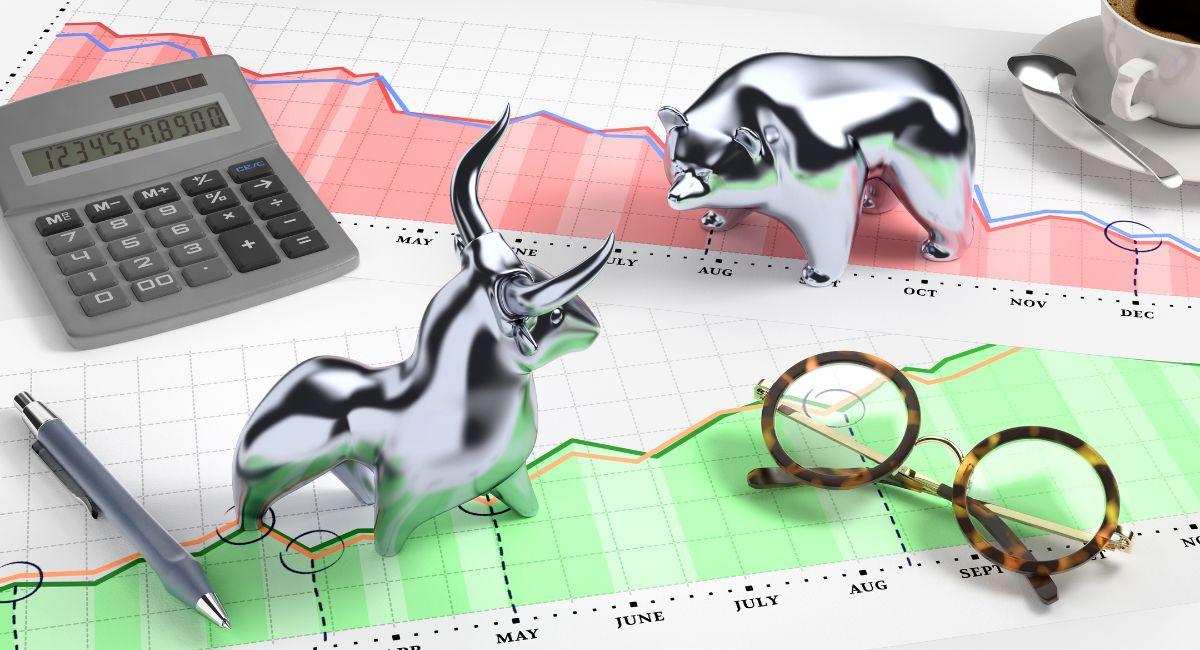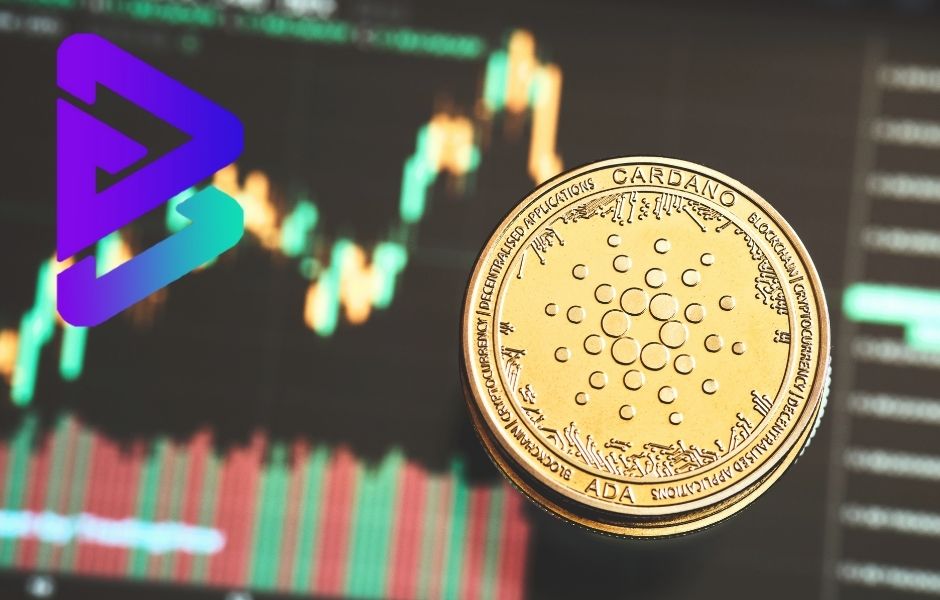The Necessity Of DeFi Metrics In Bull Markets And How Investors Should Act?
In recent years, the explosive growth of decentralized finance (DeFi) has reshaped the landscape of the traditional financial industry. As blockchain technology evolves, decentralized applications (dApps) and protocols are gaining traction, providing users with innovative financial services and opportunities. Amid the rise of these decentralized ecosystems, the importance of monitoring and analyzing DeFi metrics becomes particularly evident, especially during bull markets.
Understanding DeFi Metrics

DeFi metrics refer to various data points and indicators that measure the performance, health, and activity within decentralized financial ecosystems. These metrics offer insights into user engagement, liquidity provision, smart contract activity, and overall market sentiment. As the decentralized finance space thrives, the necessity of robust DeFi metrics becomes crucial, especially during bull markets characterized by surging asset prices, increased user participation, and heightened market enthusiasm.
1. Liquidity Metrics:
One of the fundamental pillars of DeFi is liquidity, which is crucial for the functioning of decentralized exchanges, lending platforms, and automated market makers (AMMs). In bull markets, the demand for DeFi assets often skyrockets, leading to increased trading volumes and liquidity challenges. Monitoring metrics such as total value locked (TVL), trading volume, and liquidity ratios becomes imperative to assess the resilience of DeFi protocols during periods of heightened activity.
2. User Engagement and Adoption:
Bull markets attract a broader audience to the decentralized finance space, including both experienced crypto enthusiasts and newcomers seeking to capitalize on the market uptrend. Metrics related to user adoption, such as the number of unique addresses, active wallets, and user interactions with smart contracts, provide valuable insights into the growth and sustainability of DeFi platforms. Understanding user behavior helps developers and stakeholders make informed decisions to enhance user experience and platform usability.
3. Smart Contract Activity:
DeFi protocols rely heavily on smart contracts to automate various financial functions, including lending, borrowing, trading, and yield farming. Examining metrics related to smart contract activity, such as the number of transactions, gas fees, and contract interactions, unveils the underlying dynamics of DeFi ecosystems. During bull markets, increased smart contract activity may indicate rising demand for decentralized services, but it also raises concerns about network congestion and scalability.
4. Risk Management Metrics:
While bull markets bring opportunities, they also introduce new risks, such as excessive speculation, impermanent loss, and protocol vulnerabilities. Monitoring risk management metrics, including collateralization ratios, liquidation events, and protocol audits, is essential to safeguard the integrity of DeFi platforms. As the value locked in DeFi protocols rises, ensuring the security and stability of these platforms becomes paramount to prevent potential exploits or vulnerabilities.
5. Governance and Community Metrics:
Many DeFi protocols operate under decentralized governance models, allowing token holders to participate in decision-making processes. Bull markets often lead to increased community engagement as users become more active in proposing and voting on governance proposals. Metrics related to governance participation, token voting turnout, and community sentiment help gauge the health of decentralized governance structures, ensuring that decisions align with the broader interests of the community.
6. Yield Farming and Staking Metrics:
Bull markets are characterized by a quest for yield, and DeFi users actively seek opportunities for yield farming and staking. Metrics such as annual percentage yield (APY), staking participation rates, and token distribution through liquidity mining programs provide insights into the attractiveness of different yield-generating strategies. Understanding these metrics helps users make informed decisions about allocating assets for optimal returns.
The Intersection of Bull Markets and DeFi Metrics

In bull markets, the decentralized finance ecosystem experiences both unparalleled growth and increased scrutiny. The surge in user activity, liquidity, and smart contract interactions necessitates a comprehensive understanding of DeFi metrics to navigate the evolving landscape successfully. Key stakeholders, including developers, investors, and users, can leverage these metrics to make informed decisions, identify trends, and contribute to the overall maturation of the DeFi space.
1. Informed Decision-Making:
- Optimizing Strategies: DeFi metrics empower users to optimize their strategies, whether it be yield farming, liquidity provision, or participation in governance.
- Risk Mitigation: Informed decision-making based on relevant metrics allows users to mitigate risks and capitalize on opportunities presented during bull markets.
2. Platform Development and Iteration:
- Enhancing User Experience: Developers can use user engagement metrics to enhance platform usability, ensuring that DeFi protocols cater to the diverse needs of an expanding user base.
- Scalability Solutions: Smart contract activity metrics guide developers in implementing scalability solutions to accommodate increased demand and maintain a seamless user experience.
3. Market Transparency and Credibility:
- Building Trust: DeFi metrics contribute to market transparency, fostering trust among users and investors.
- Credible Projects: Protocols that regularly provide and update meaningful metrics demonstrate a commitment to transparency, enhancing their credibility within the decentralized finance space.
4. Regulatory Preparedness:
- Navigating Regulatory Challenges: As the decentralized finance sector attracts regulatory attention, metrics related to risk management and compliance become crucial for navigating regulatory challenges.
- Enhancing Security Measures: Platforms that proactively address security concerns through risk management metrics are better positioned to navigate regulatory landscapes.
5. Sustainable Growth:
- Community Alignment: Governance and community metrics help ensure that the decision-making process aligns with the long-term interests of the community.
- Avoiding Overreliance: Sustainable growth involves avoiding overreliance on short-term trends and ensuring that DeFi ecosystems remain resilient beyond the hype of bull markets.
Also, read – Are DeFi Metrics Useful In A Bear Market: How And Why?
Challenges and Future Considerations

The decentralized finance (DeFi) ecosystem has experienced significant growth, attracting attention from investors, developers, and regulators alike. As the importance of DeFi metrics becomes increasingly apparent, challenges arise in standardizing these metrics across different protocols and ensuring accurate reporting. Addressing these challenges is crucial for the continued development and maturation of the decentralized finance space.
1. Diverse Ecosystem:
- Challenge: The DeFi ecosystem is diverse, with a multitude of protocols offering various financial services. Each protocol may have unique features, making it challenging to establish a standardized set of metrics applicable across the entire ecosystem.
- Impact: Lack of standardization hinders comparability between different DeFi projects, complicating efforts to evaluate and rank them based on consistent criteria.
2. Varying Tokenomics:
- Challenge: DeFi protocols often have different tokenomics models, including governance tokens, utility tokens, and reward tokens. Metrics related to these tokens may not be directly comparable due to variations in their economic structures.
- Impact: Investors and analysts may face difficulties in assessing the economic incentives and value propositions of different tokens, leading to potential misunderstandings and misinterpretations.
3. Dynamic Market Conditions:
- Challenge: DeFi markets are dynamic, with rapidly changing conditions influenced by market sentiment, technological developments, and regulatory changes. Standardizing metrics in a landscape characterized by constant evolution is a significant challenge.
- Impact: Metrics that are relevant and accurate in one market condition may not provide the same insights in another, making it challenging to establish consistent benchmarks.
4. Smart Contract Complexity:
- Challenge: DeFi protocols heavily rely on smart contracts to automate financial functions. The complexity of these contracts varies, and extracting meaningful metrics can be challenging, especially when dealing with intricate financial products and decentralized applications.
- Impact: Lack of clarity in smart contract metrics may undermine the accuracy of performance assessments and risk evaluations, potentially exposing users to unforeseen vulnerabilities.
5. Lack of Regulatory Clarity:
- Challenge: The regulatory environment surrounding DeFi is still evolving, and there is a lack of standardized regulatory frameworks. This poses challenges in determining which metrics are essential for compliance and reporting.
- Impact: DeFi projects may struggle to navigate regulatory expectations, leading to discrepancies in reporting practices and potentially affecting the credibility of reported metrics.
BRC20 Mega Thread
Last Bull Market we saw DeFi and NFTs produce insane returns for people who were early investors in these sectors.
This Cycle one of those narratives could be BRC20 which is still in its birth. Why? Because it’s new Bitcoin Technology and a Bitcoin ETF is…
— Corleone (@corleonescrypto) December 14, 2023
The Vital Role of Investors in DeFi Metrics During Bull Markets

Decentralized Finance (DeFi) has witnessed unprecedented growth, garnering attention from both retail and institutional investors. As the popularity of DeFi protocols continues to surge, investors play a vital role in shaping and influencing the metrics that define the health and success of these decentralized financial ecosystems, especially during bull markets.
Bull markets in DeFi are characterized by a substantial increase in the prices of decentralized assets, a surge in user participation, and heightened market enthusiasm. During these periods of optimism, investors actively seek opportunities to capitalize on the upward momentum, driving liquidity, and engagement within the DeFi space. Understanding the critical role investors play in shaping DeFi metrics is essential for comprehending the dynamics of decentralized finance during bullish trends.
1. Liquidity Provision and Trading Volume:
Investor Impact: In bull markets, investors contribute significantly to the liquidity pool of decentralized exchanges (DEXs) and trading platforms. They engage in trading activities, providing liquidity for various DeFi assets. Metric Significance: Metrics such as total value locked (TVL) and daily trading volume reflect the liquidity and trading activity within DeFi protocols. Investors’ active participation influences these metrics, impacting the overall health and performance of decentralized exchanges.
2. Yield Farming and Staking Participation:
Investor Impact: Bull markets often trigger increased demand for yield-generating strategies like yield farming and staking. Investors actively seek opportunities to earn rewards by participating in these DeFi protocols. Metric Significance: Metrics related to annual percentage yield (APY), staking participation rates, and total staked value gauge the attractiveness of yield farming and staking options. Investors’ decisions to allocate assets to these strategies directly impact these metrics, shaping the landscape of decentralized finance.
3. Governance Participation:
Investor Impact: DeFi protocols often operate under decentralized governance models, allowing token holders to participate in decision-making processes. Bull markets witness heightened interest from investors in proposing and voting on governance proposals. Metric Significance: Metrics related to governance participation, token voting turnout, and the success of governance proposals reflect the level of investor engagement. Investors actively shaping the direction of DeFi protocols during bull markets contribute to the overall decentralization and governance of these platforms.
4. Smart Contract Interactions:
Investor Impact: The surge in bullish sentiment prompts increased engagement with DeFi smart contracts, including lending, borrowing, and decentralized applications. Investors execute transactions, contributing to the overall smart contract activity. Metric Significance: Metrics such as gas fees, transaction counts, and smart contract interactions provide insights into the level of activity within DeFi ecosystems. Investors’ interactions with smart contracts influence these metrics, contributing to the overall vibrancy of decentralized finance platforms.
5. Risk Management and Security:
Investor Impact: During bull markets, investors’ risk appetite tends to increase as they explore new DeFi opportunities. Simultaneously, there is a greater emphasis on risk management, as investors seek to protect their assets from potential vulnerabilities. Metric Significance: Metrics related to collateralization ratios, liquidation events, and security audits gauge the effectiveness of risk management within DeFi platforms. Investors actively contribute to these metrics by making informed decisions about risk exposure and security considerations.
6. Community Sentiment and Brand Perception:
Investor Impact: Bull markets often lead to the formation of vibrant and active communities around DeFi projects. Investors play a crucial role in shaping community sentiment, contributing to the overall brand perception of decentralized finance platforms. Metric Significance: Metrics related to community engagement, social media discussions, and sentiment analysis provide insights into the perception of DeFi projects. Investors’ participation in discussions and their alignment with project goals impact these metrics, influencing the broader narrative around decentralized finance.
Stay informed with daily updates from Blockchain Magazine on Google News. Click here to follow us and mark as favorite: [Blockchain Magazine on Google News].
Get Blockchain Insights In Inbox
Stay ahead of the curve with expert analysis and market updates.
latest from tech
Disclaimer: Any post shared by a third-party agency are sponsored and Blockchain Magazine has no views on any such posts. The views and opinions expressed in this post are those of the clients and do not necessarily reflect the official policy or position of Blockchain Magazine. The information provided in this post is for informational purposes only and should not be considered as financial, investment, or professional advice. Blockchain Magazine does not endorse or promote any specific products, services, or companies mentioned in this posts. Readers are encouraged to conduct their own research and consult with a qualified professional before making any financial decisions.

 Bitcoin
Bitcoin  Ethereum
Ethereum  Tether
Tether  Solana
Solana  Dogecoin
Dogecoin  XRP
XRP  USDC
USDC  Lido Staked Ether
Lido Staked Ether  Cardano
Cardano  TRON
TRON  Shiba Inu
Shiba Inu  Toncoin
Toncoin  Avalanche
Avalanche  Wrapped Bitcoin
Wrapped Bitcoin  Wrapped stETH
Wrapped stETH  Sui
Sui  Pepe
Pepe  WETH
WETH  Chainlink
Chainlink  Bitcoin Cash
Bitcoin Cash  Polkadot
Polkadot  LEO Token
LEO Token  NEAR Protocol
NEAR Protocol  Litecoin
Litecoin  Aptos
Aptos  Wrapped eETH
Wrapped eETH  USDS
USDS  Uniswap
Uniswap  Cronos
Cronos  Stellar
Stellar  Internet Computer
Internet Computer  dogwifhat
dogwifhat  Bittensor
Bittensor  Ethereum Classic
Ethereum Classic  Dai
Dai  Artificial Superintelligence Alliance
Artificial Superintelligence Alliance  WhiteBIT Coin
WhiteBIT Coin  Ethena USDe
Ethena USDe  POL (ex-MATIC)
POL (ex-MATIC)  Stacks
Stacks  Bonk
Bonk  Monero
Monero  Render
Render  OKB
OKB  Hedera
Hedera  Filecoin
Filecoin  Aave
Aave 



